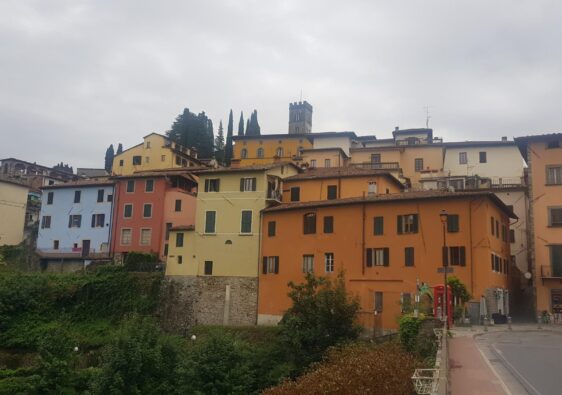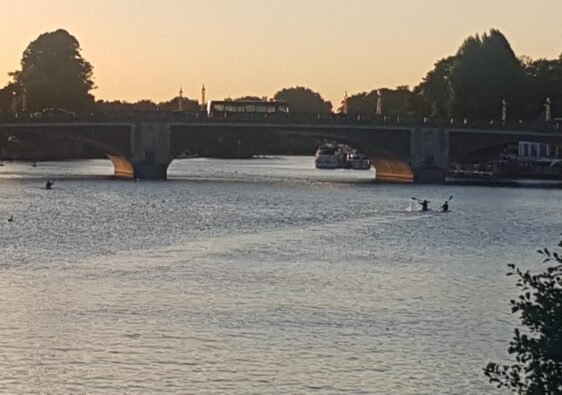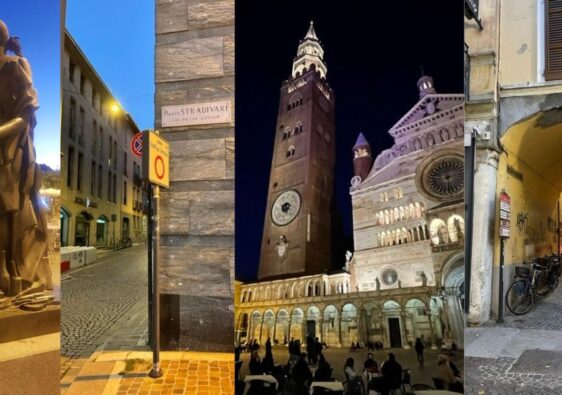
Soncino is an ancient walled village about 35km north west of Cremona. We visited it in early October 2022 during the festival that celebrates the ancient tradition of moving cattle from the Alps to lower lying areas for the winter.
This ancient practice is known as Transhumance, and you can read more about it here. We had previously encountered this practice in a very different setting . You can read more about that in our account of driving the Helskloof Pass in the Richtersveld.
Back to Soncino. This is another one of those wonderful “off the beaten track” destinations that is quintessentially Italian. Lots of history and culture, awesome food, but not so many tourists.

Soncino’s History is Fascinating.
According to the Soncino tourist blurb, nobody really knows when Soncino was founded, or by whom. But it’s safe to say it was a very long time ago. Fifteenth century historians believed it started life as a Celtic village which was later conquered and occupied by the Romans.
In any event, the oldest building still intact in the village is the Pieve di Santa Maria Assunta which is still the main church in the town. It dates back to the 5th century.
Being strategically placed on the Oglio River, Soncino’s history is littered with battles for the control of the river. It changed “ownership” many times, either via conquest or it was bought or sold. For example, in 1118 the city of Cremona bought it from the Count of Bergamo. But by 1454 it fell under the Duke of Milan who had the current wall around the town built to fend off repeated attacks by the Republic of Venice.
Soncino was obviously a prized possession back in the day.
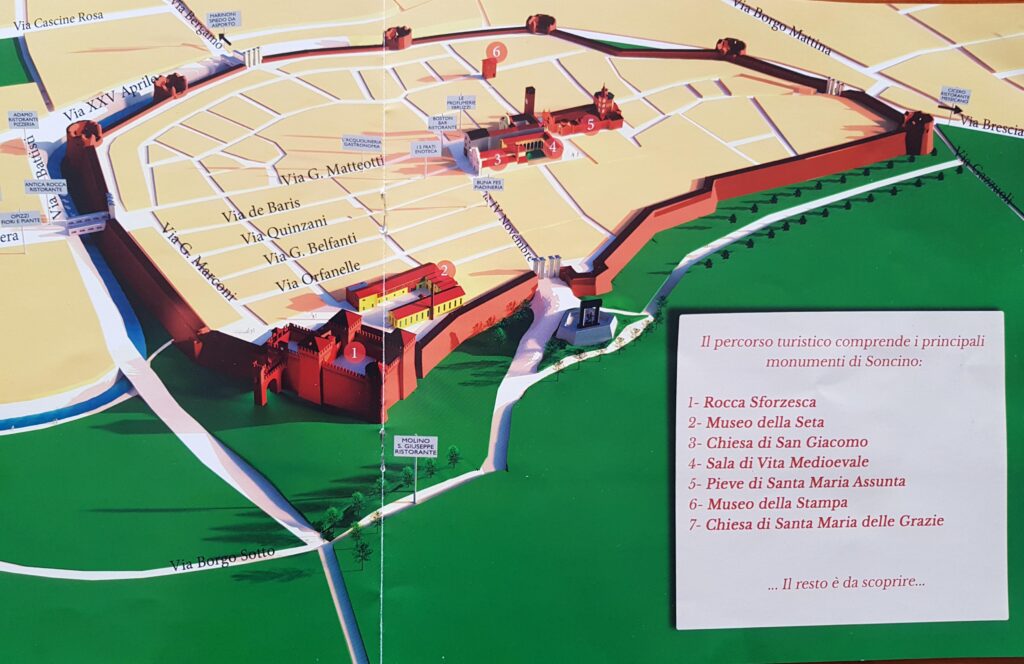
(from a brochure supplied by the Soncino Tourist office)
Soncino’s Historical Landmarks
If you look at the map above, there are more than 5 good reasons to visit Soncino. It will just depend on what your interests are.
There is an entrance fee to cross the moat into the walled town but it is well worth the price.
Once inside we visited:
The Sforza Fortess (Rocca Sforesca)
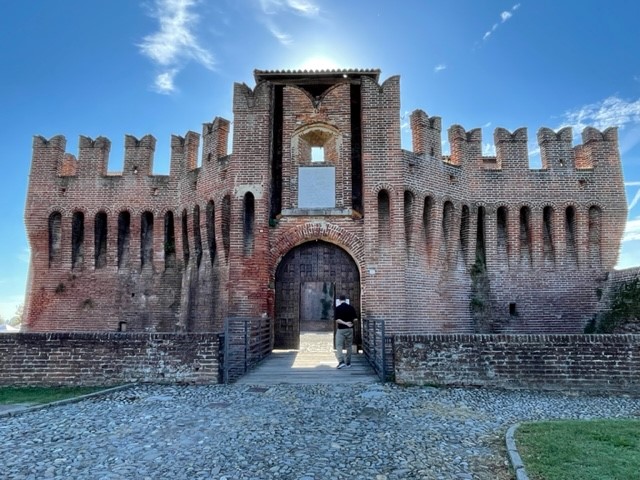
The castle of Soncino is one of the most impressive (and obvious) historical sites in the town. It was constructed in the 1470’s and, quite remarkably, took only 3 years to complete.
We started our exploration here taking in the dungeons, tower and the battlements. The latter also give you a great view of the surrounding countryside.
Built entirely of red brick, this castle/fortess is remarkably well preserved and has lots of stairs. So bring your climbing legs with you because you don’t want to miss out on the experience of visiting the dungeon and tower.
The Town Walls
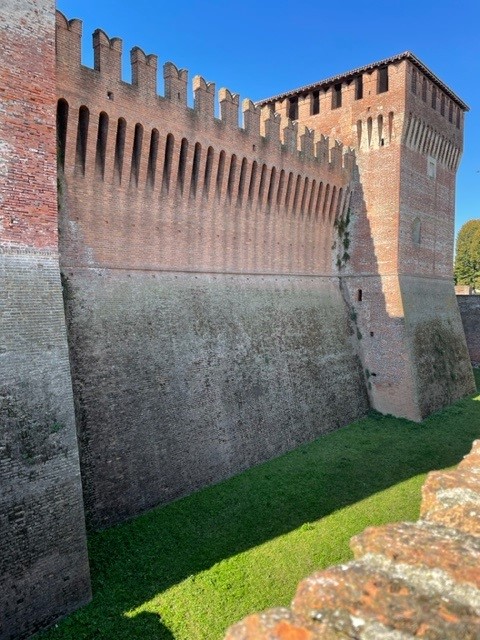
Walking along the top of the walls is an opportunity to let your imagination run wild and imagine what it would have been like to stand atop the walls to repel an invading army.
The construction of the battlements is fascinating, with numerous protected areas where one can take cover while pouring boiling oil or water over invaders trying to scale the walls. Fun stuff today….probably not so fun in the Middle Ages.
Museo della Stampa
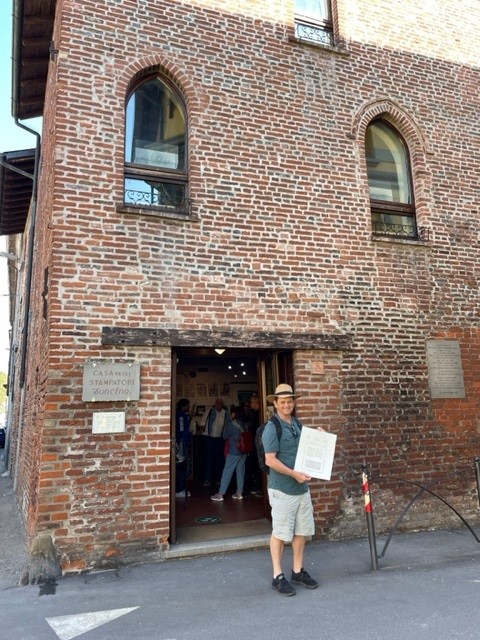
This little building has a fascinating history. We arrived well after lunch and waited a bit until a guide who spoke English was available. We didn’t have a long wait and it was well worth it.
It is hard to believe that in this little corner of Soncino, on the 22nd April 1488, Abraham ben Hayyim finished printing the first complete Hebrew Bible, consisting of the Torah, Nevi’im and Ketuvim. It is thought that 200-300 copies were printed.
Although that is it’s claim to fame, the museum also features a wide range of historic printing artifacts. One of these is still fully functional and if you want, you can follow the whole printing process that was used centuries ago, and produce your own printed sheet.
That little exercise took a while. In today’s fast paced and impatient world, it’s hard to contemplate the patience and perfection needed to produce even 200 copies of a book!
Soncino’s Churches are a Sight to Behold
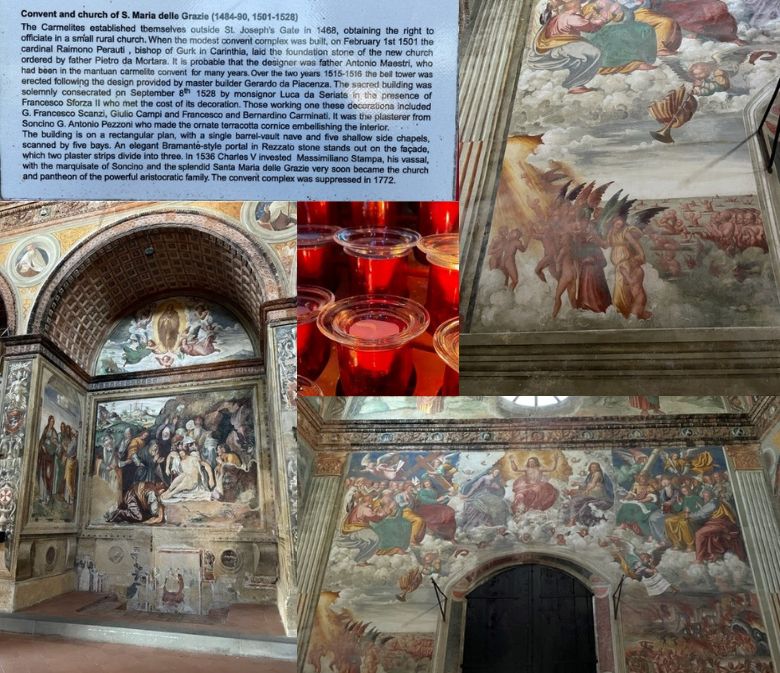
As befits an Italian village with an impressive history, Soncino and surrounds boast several churches that are well worth visiting.
The designs of the buildings and the frescoes are mind blowing, even if you are not particularly into architecture or art.
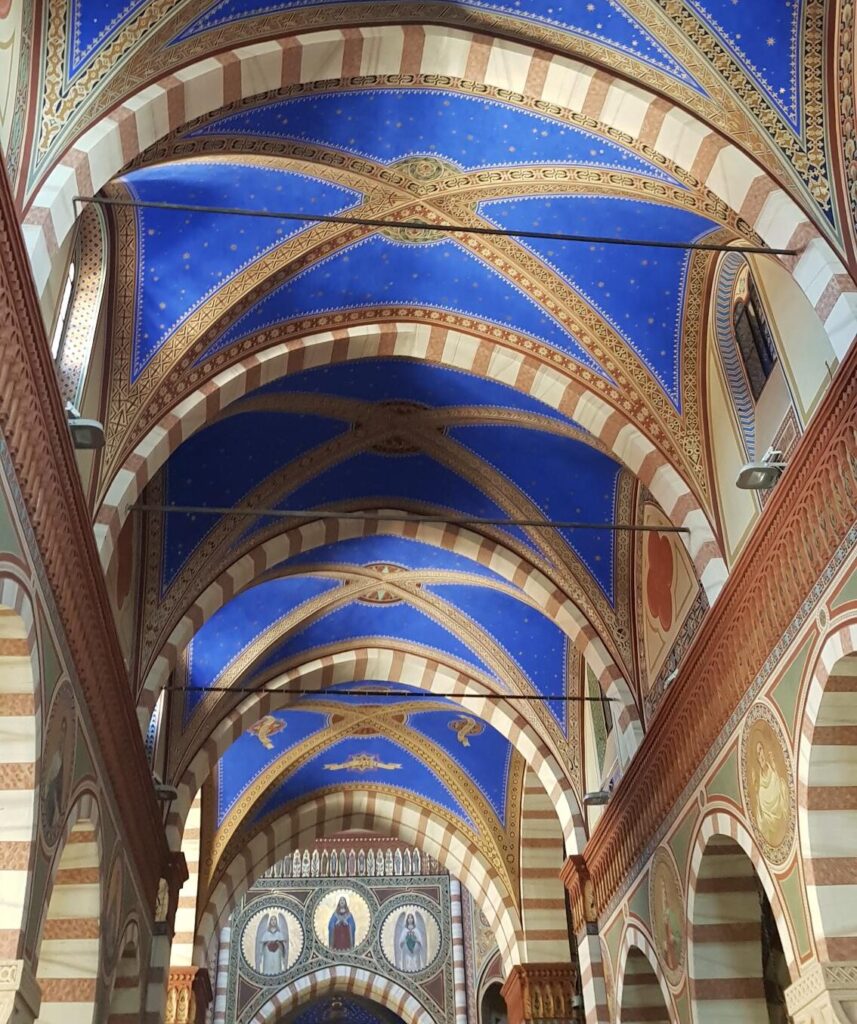
What we always find fascinating is that many of these rural churches look pretty anonymous from the outside and their entrances are often pretty average in appearance. But once you step off the street and through the innocuous looking wooden door (or in one case – a curtain), you find yourself in a whole new and unexpected world.
And even if you are not short of your 10 000 steps/day goal (who is when you spend your day touristing?) make sure you take a stroll outside the fortified town down to the Chiesa Santa Maria delle Grazie. Once inside take a close look at the depiction of the last supper painted as a frescoe on one of the walls. You might be surprised to see who is included in this version of that event.
There is More to Soncino than History
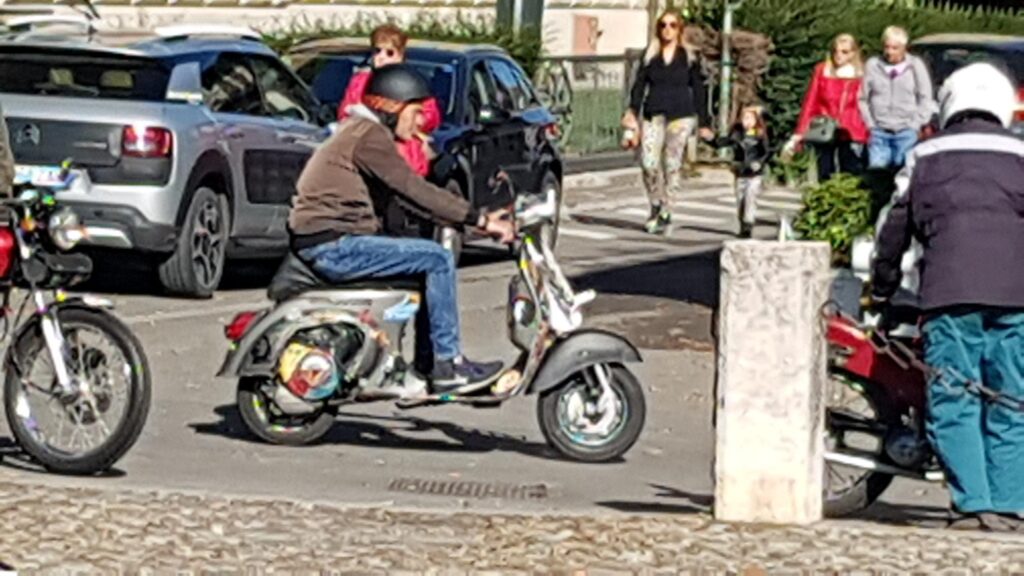
Although the walled town is certainly the centre piece of Soncino, there are lots of other reasons why a visit to Soncino is a great idea.
Food and Italy go together, and Soncino is no exception.
The village is known for its delicious cured meats and cheeses. Visitors can try these at local restaurants or buy them at the weekly farmers’ market held in the village square. Soncino is also happily located in the Franciacorta wine region, which produces some wonderful sparkling wines. So if you are a wine fundi, make time to take a tour of the local vineyards and sample some of these wines.
And if you are into enjoying the countryside, then the area around Soncino offers a wonderful array of hiking and biking trails.
Take a trip to Soncino and enjoy all it has to offer. You wont be disappointed. We weren’t!
See more places of interest we have visited on our travels.
